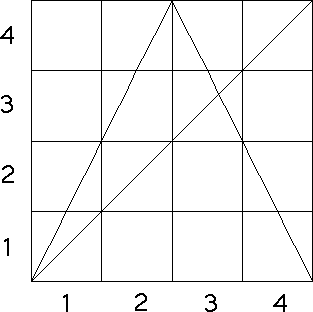For both graphs, note each bin on the bottom of the unit square goes to a union of complete bins on the side of the square.
 |
 |
 |
||||||||
|
|
This relation between graphs and bins is called a Markov partition of the trapping square. For these examples, the trapping sqaure is the whole unit square.
By contrast, here is an example that is not a Markov partition.
Importance of Markov partitions For a Markov partition, the driven IFS is always determined by its empty length 2 subsquares.
In this way, these are the simplest of the driven IFS.
One way to measure the complexity of a dynamical process is to find the smallest collection of empty subsquares needed to generate the driven IFS. This is called the grammatical complexity of the function and the partition.
Here is an example illustrating the relation between the bin transitions of the graph and the empty squares of the driven IFS.
| bin 1 | bin 2 | bin 3 | bin 4 |
Return to Driven IFS.